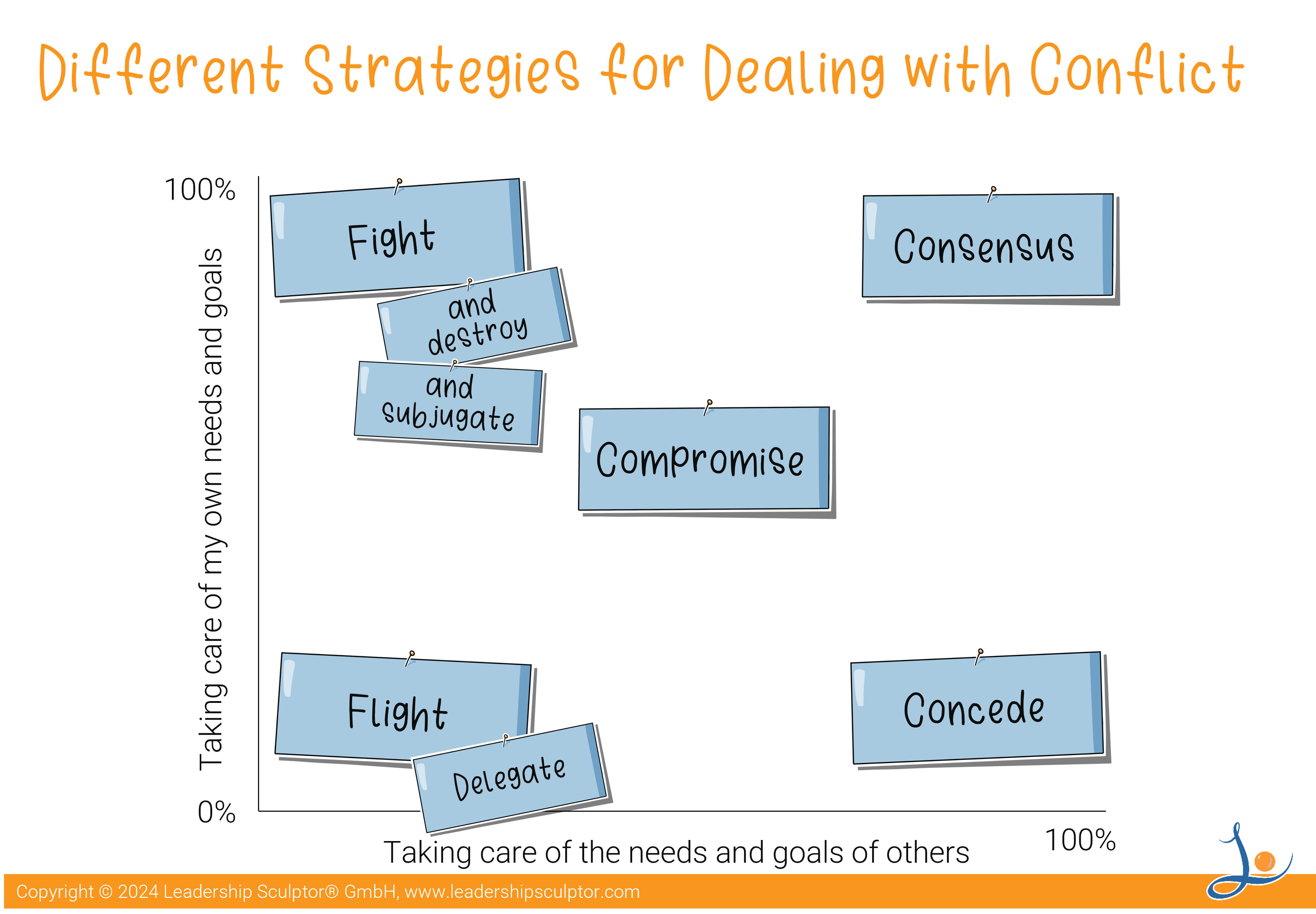

Conflicts are a natural part of our work as researchers. However, the way we approach managing and resolving these conflicts can make all the difference. It’s not just about addressing disagreements but about choosing the right strategy for the situation and the people involved. Over the years, researchers have developed models that help us understand and navigate these challenges, including those by Kenneth Thomas, Ralph Kilmann, and Gerhard Schwartz.
Thomas and Kilmann’s model focuses on two dimensions: how assertive and how cooperative we are in a conflict. This combination leads to five distinct strategies. Avoiding is the strategy where neither party’s needs are addressed—people ignore the problem and hope it will go away. On the other hand, competing is about asserting your own needs at the expense of others. While it might seem efficient, it often damages relationships. Accommodating is the opposite: prioritizing the other party’s needs over your own. It can preserve harmony in the short term but often leads to frustration. Compromising is a middle ground—everyone gives up something. It’s practical but rarely satisfying. Then there’s collaborating, where both parties work together to find a solution that meets everyone’s needs. It’s ideal but requires time and trust.
Schwartz’s model looks at conflicts from another angle, focusing on the outcomes people seek. One common strategy is flight, where we avoid addressing the conflict altogether. It feels safe but leaves problems unresolved. On the other extreme is fight and destroy, where one party seeks to completely eliminate the other—whether by damaging their reputation or forcing them out. This approach, while final, leaves little room for future collaboration. A milder form of this is fight and subjugate, where one party asserts control, but tensions often linger. Delegation involves handing the conflict to a third party, like a supervisor or mediator. It can prevent escalation but doesn’t always lead to a solution everyone accepts. Compromise appears fair but often leaves both parties only partially satisfied. Finally, there’s consensus—a solution that meets everyone’s needs. It requires time, trust, and effort but often results in the strongest outcomes.
Choosing the right approach depends on the context. Sometimes it’s about resolving the conflict quickly; other times, it’s about preserving relationships or fostering trust. Whatever the situation, the key is to be thoughtful about the strategy you use. Conflicts, when handled well, can become opportunities for growth and stronger collaboration.




